Baklawa, a mouthwatering dessert of layered golden filo pastry, with crushed nuts and a drizzle of sugar syrup. This is the best Lebanese baklava recipe.
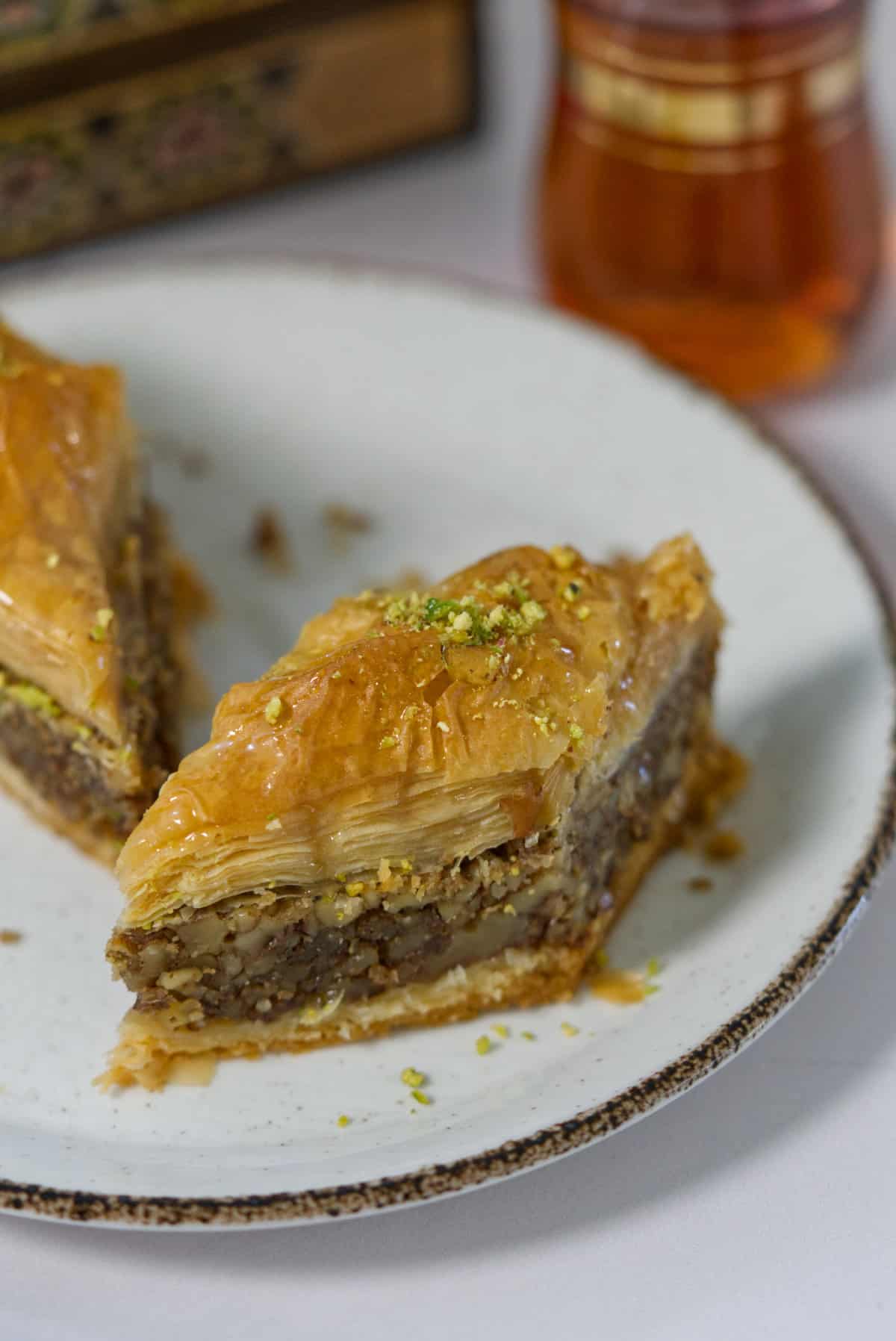
This is one of the Arabic desserts that won my heart as a child. I swear I would devour about four pieces in one sitting as a kid.
Baklawa is just naughty good.
I so adore the aroma when it’s baking this sweet, it wafts throughout the home, filling it with that feeling of ‘something super sensational is baking’.
I don’t think there ever lived an Arab who doesn’t love this dessert. It’s always found in the kitchen when guests are over, ready to be served with some strong ahwa (Arabic coffee) or it’s always available for a special occasion.
Baklawa is pronounced as bak-lah-wah in Arabic. It is also said as baklehwah, batlehwah, batlawa depending on where in the Middle East.
Traditionally, batlewah it is not made with layers of nuts, rather a sandwich of nuts between two layers of filo pastry.
My mother makes her Lebanese baklava by brushing each layer of pastry with ghee.
I’ve swapped out ghee with vegetable ghee and used the soaking method I learned by Chef Ahmed.
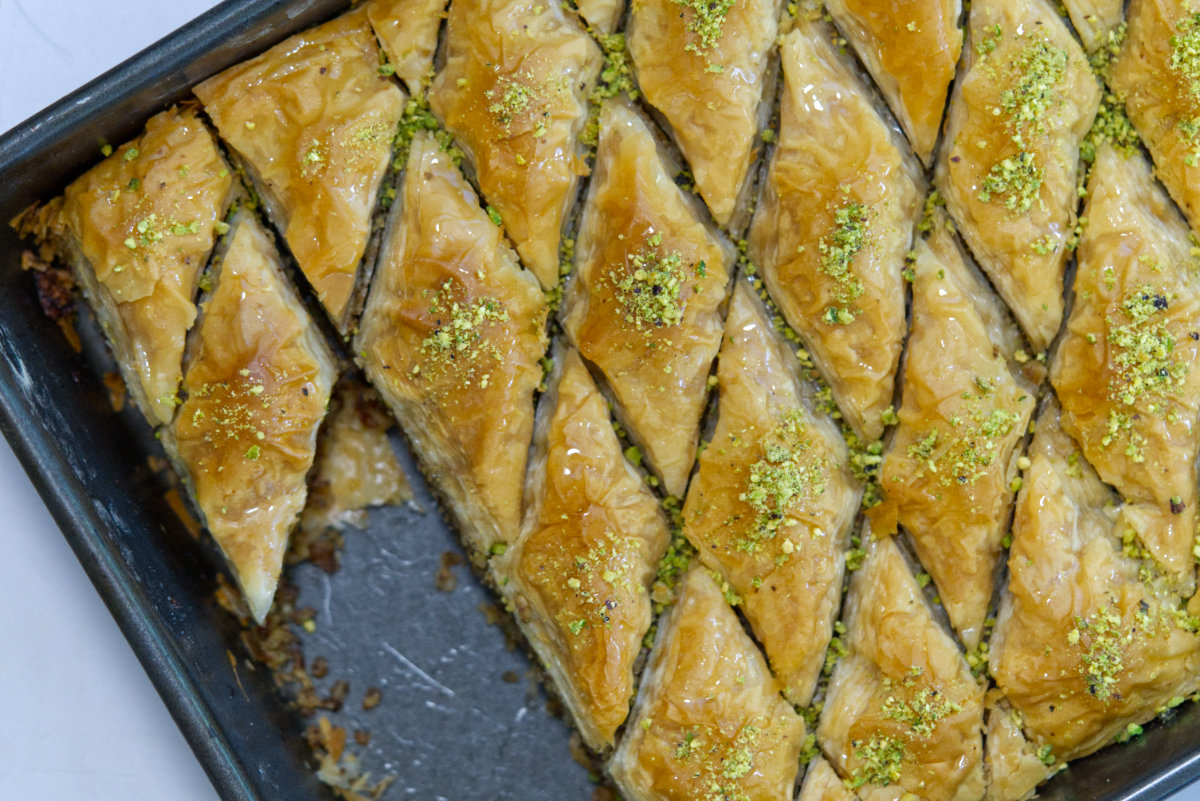
Baklawa vs Baklava
Baklawa is the Middle Eastern version whilst baklava is the Greek version. The concept of both is similar, the difference is in the syrup.
The Middle Eastern dessert uses a rose water/orange blossom sugar syrup called atter.
Whilst the Greek dessert uses a honey-based syrup.
It is believed that baklawa first originated in Assyria which then spread to the Mediterranean and various versions created from there developed into baklava.
Lebanese/Syrian Baklawa is normally quite light and not as heavy in sweetness.
😋Why you’ll love this recipe
- It’s so easy to make - you’ll be surprised
- Simply irresistible.
- No need to (butter) each layer! Save yourself some time.
✔️What you’ll need
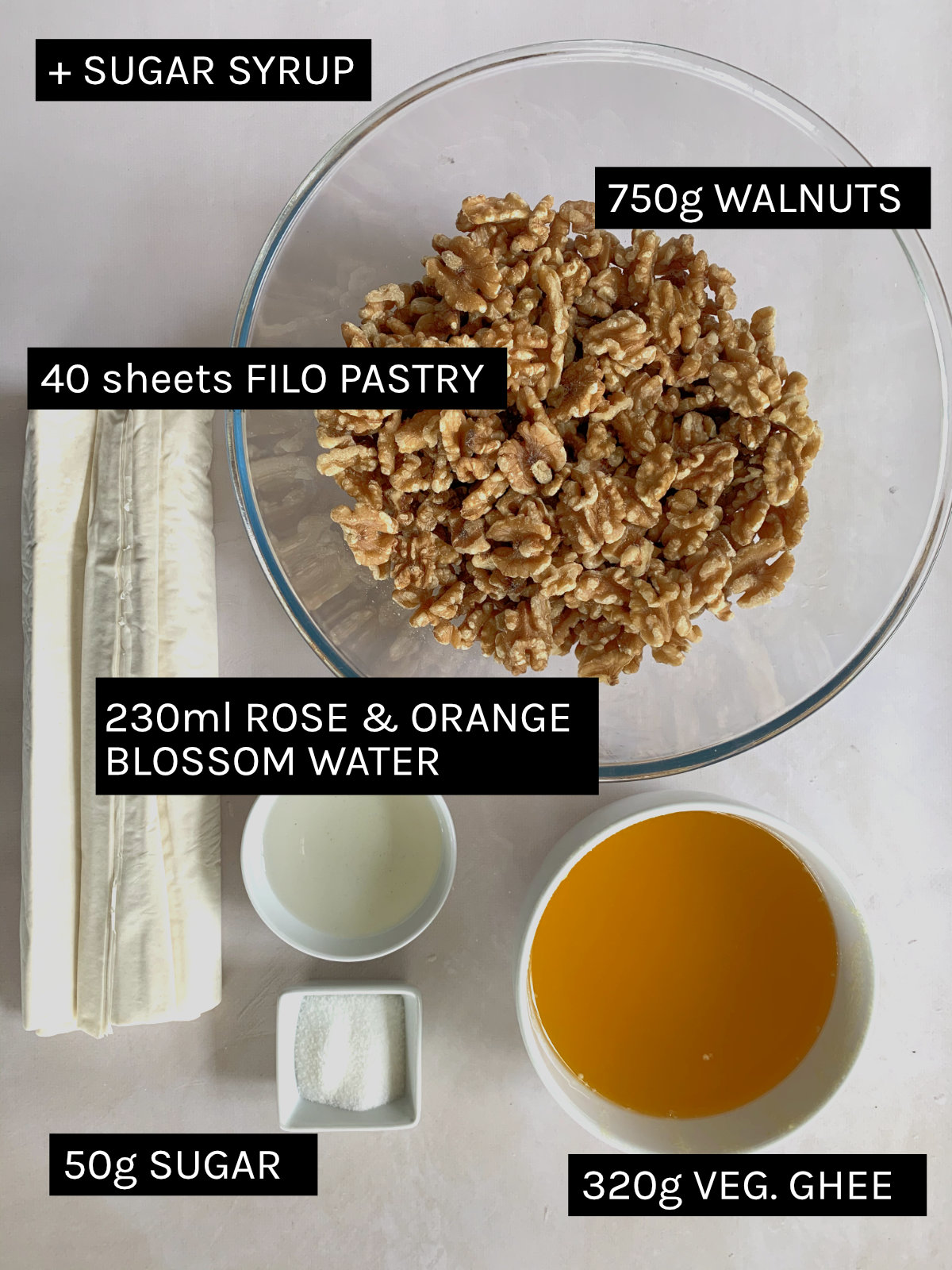
🥘Ingredient Notes
Here are notes on some of the ingredients, the complete list with measurements, can be found in the full recipe card below.
Filo pastry - also known as phyllo pastry. Is usually found in the freezer section or fridge section. If found in the fridge there is no need to thaw out.
Cut the filo pastry to fit your tray, but allow some excess on the top layer to tuck in the edges. See video for how this is done.
Walnuts - use only raw walnuts. Try and find the freshest variety, rather than old and stale as the nut filling is the hero in this recipe.
Atter (sugar syrup) is used widely in Arabic desserts. Specifically for Baklava, atter is made in a 3:1 ratio (sugar:water) as it needs to be thicker as little is used to drizzle on top.
It (atter) can also be left to the discretion of the person eating a piece of baklawa to add as much as they like.
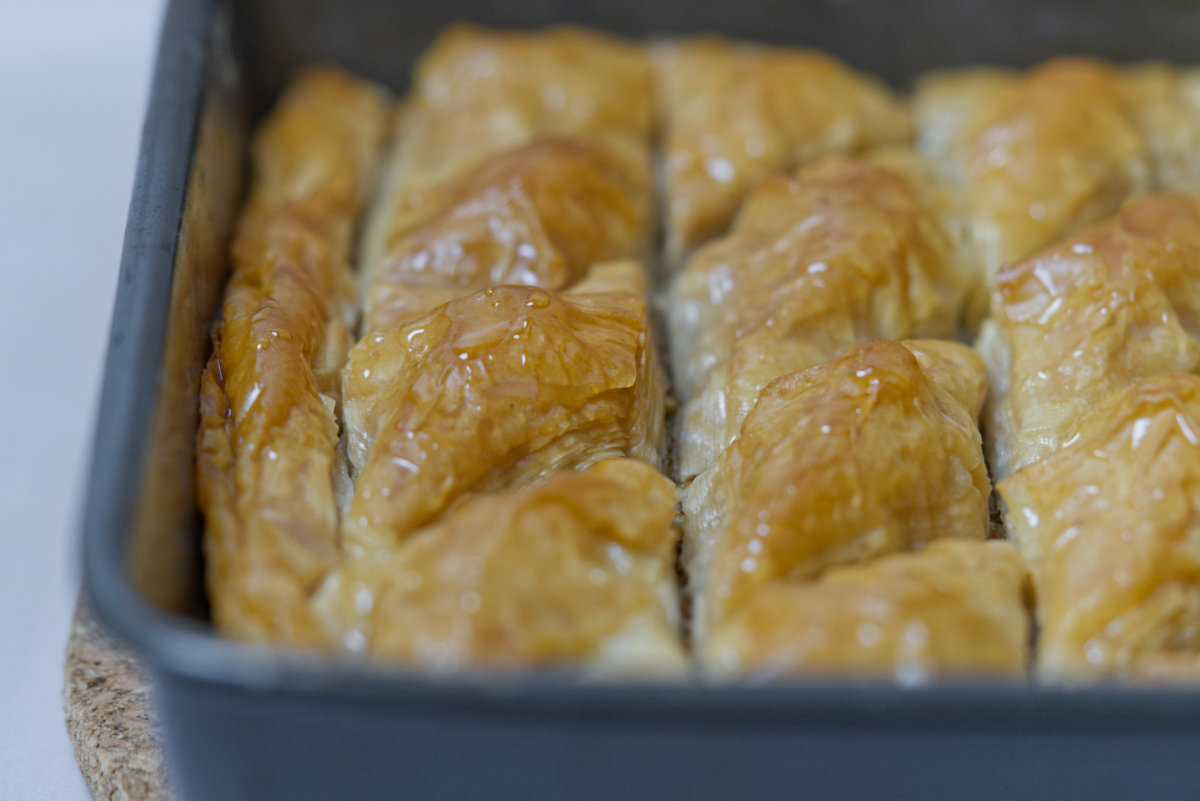
🔪Step by Step Guide
Here’s how to make baklawa;
Prepare Atter (Sugar Syrup)
Step 1 Over high heat, add sugar and water. Stir for 30 seconds and bring to a boil.
Once boiling add rose water/orange blossom water and then add lemon juice, continuously stirring for 1 minute and then allow to boil for 2 more minutes.
Set aside to cool. (see pro tips)
Prepare Hashweh (Filling)
Step 2 Roughly chop walnuts into small pieces. Add chopped walnuts in a bowl with 1 tbs of sugar and ¼ cup of rose water/orange blossom water.
Mix with hands until mixture holds together but can still crumble.
Assemble Baklawa
Step 3 Brush the baking tray with a light coating of vegetable ghee. Place 20 filo dough flat into the tray. Sprinkle 1 teaspoon of sugar onto the dough. Evenly Spread hashweh (filling) on top.
Step 4 Spray 1 teaspoon of sugar onto hashweh and then cover with another 20 layers of filo dough. Tuck edges in using your fingers.
Step 5 Pat down and press the pastry firmly so it compacts together really well.
Step 6 Cut into diamonds (or desired shape) and cover with warm vegetable ghee.
Step 7 Place into a preheated oven of 180C (356F) on the ¾ shelf (lower than mid-shelf). Bake for 15 minutes and then turn the tray around. Bake for another 50-60minutes.
Step 8 Once baklawa is baked, take it out of the oven and drain excess ghee immediately. Lightly coat in cold sugar syrup.
Allow baklawa to completely cool at room temperature for at least 2-3 hours before re-cutting and serving. See pro tips.
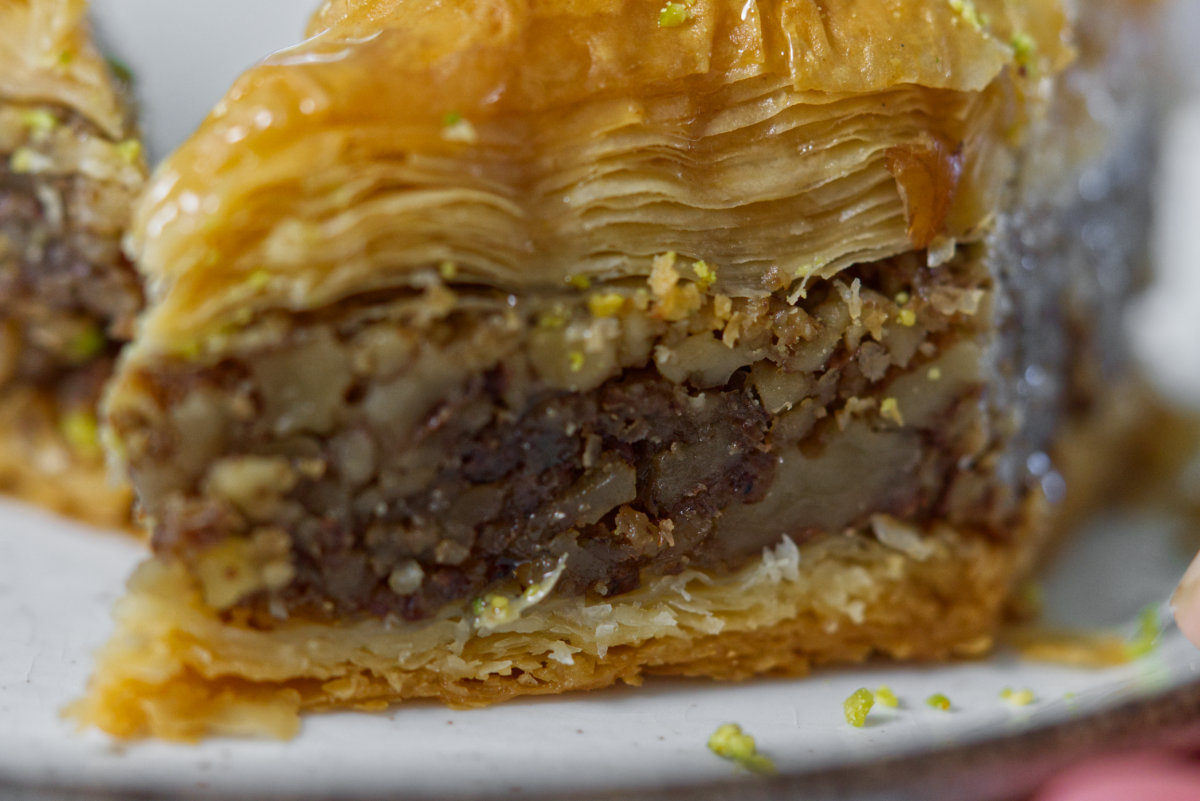
Pro Tips
Baklawa is always served cold.
Hashweh must not contain too much moisture, moisture will cause the filling to bake a dark color which is not ideal.
A spray of sugar on top of the bottom layer of filo dough and on top of the hashweh helps the dough stick to the hashweh (filling)
Tuck in the edges as tightly as you can without ripping the delicate dough
Patting down pastry is super imperative to the success of constructing a successful batlawa, it’s one of the factors for making sure there is no separation between the layers
Whilst baking, if the baklawa doesn’t dry in the oven, the layers will separate from each other
Warm vegetable ghee is important, hot vegetable ghee will not soak through all layers. Each piece must be covered in vegetable ghee.
The first 15 minutes are important when baking, as it’s when the layers are baking into each other. DO NOT open the oven beforehand. After rotating the tray, check-in every 10 minutes. The last 10 minutes are crucial as the pastry will brown quickly.
As soon as the Lebanese baklava is baked and taken out of the oven, it must be drained of excess vegetable ghee so it doesn’t soak up any excess.
Applying atter (sugar syrup) - the following rules must be followed otherwise you will end up with soggy baklawa. Apply cold sugar syrup to hot pastry or hot sugar syrup to cold pastry.
Most likely not all the atter (sugar syrup) will be used, leftovers can be stored in an airtight container in the fridge for up to one month.
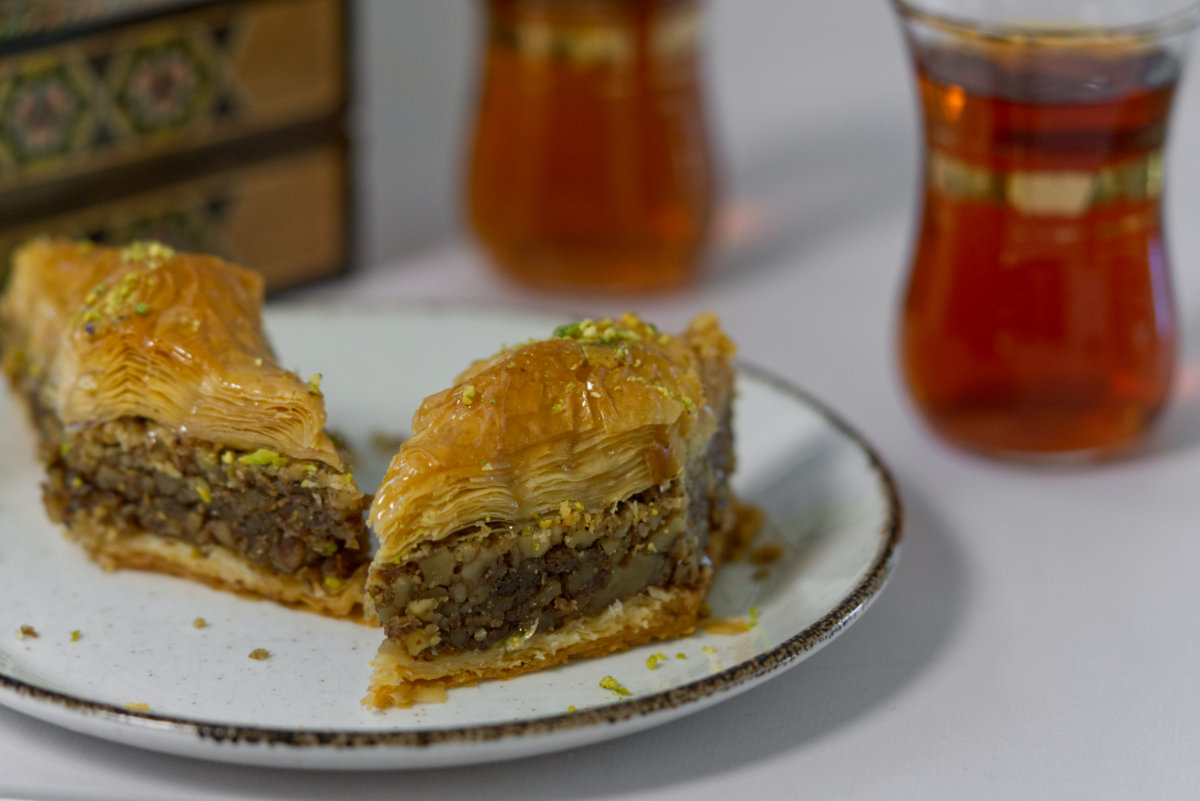
🍳Variations
Though I’ve not tried these, here are some ideas for making it healthier
- Use maple syrup or agave syrup in place of sugar syrup
- Brush each layer of filo with a light olive oil rather than using vegetable ghee
- I am currently working on a healthier baklava version, so stay tuned - sign up to my newsletter to get notified.
🥘Related Recipes
Another vegan Lebanese dessert recipe is namoura it's a decadent semolina cake. Or you might like something light like my creamy Lebanese rice pudding.
You might also like a cup sahlab which is a sweetened milk drink.
Or a wholefoods plant based no oil vegan sweet potato brownies.
Did you enjoy making the best Lebanese baklava I would love to hear from you, leave me a comment below and give me a rating. This will help me sustain Plant Based Folk.
Alternatively, did you happen to take a photo? Tag me @plantbasedfolk on Instagram to be featured via stories.
Recipe
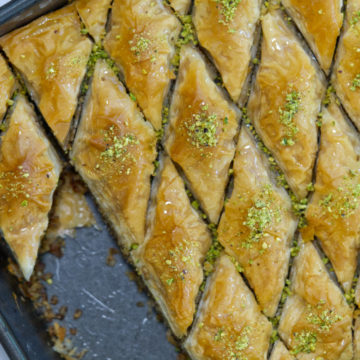
Baklawa (Lebanese Baklava)
Ingredients
Atter (Sugar Syrup)
- 1½ cup White Granulated Sugar
- ½ cup Water
- ½ teaspoon Rose Water
- ½ teaspoon Orange Blossom Water
- 1 teaspoon Lemon juice fresh
Hashweh (Filling)
- 750 g Crushed walnuts
- 115 ml Orange Blossom Water
- 115 ml Rose water
- 25 g Sugar granulated
Baklava
- 750 g Filo Pastry thawed (40 sheets)
- 25 g Sugar granulated (divided into 2)
- 320 g Vegetable Ghee melted and warm
- 20 g Pistachio crushed (for garnish)
Instructions
Prepare Atter (Sugar Syrup)
- Over high heat, add sugar and water. Stir for 30 seconds and bring to the boil. Once boiling add rose water/orange blossom water and then add lemon juice, continuously stirring for 1 minute and then allow to boil for 2 more minutes. Set aside to cool. (see pro tips)
Prepare hashweh (filling)
- Roughly chop walnuts into small pieces. Add chopped walnuts in a bowl with 1 tbs of sugar and ¼ cup of rose water / orange blossom water. Mix with hands until mixture holds together but can still crumble.
Assemble Baklawa
- Brush baking tray with a light coating of vegetable ghee. Place 20 filo dough flat into the tray. Spray 1 teaspoon of sugar onto the dough. Evenly Spread hashweh (filling) on top. Spray 1 teaspoon of sugar onto hashweh and then over with another 20 layers of filo dough. Tuck edges in using your fingers.
- Pat down and press pastry firmly so it compacts together really well. Cut into diamonds (or desired shape) and cover with warm vegetable ghee.
- Place into a preheated oven of 180C (356F) on the ¾ shelf (lower than mid shelf). Bake for 15 minutes and then turn the tray around. Bake for another 50-60minutes.
- Once baklawa is baked, take out of the oven and drain excess ghee immediately. Lightly coat in a cold sugar syrup. Sprinkle with crush pistachio. Allow baklawa to completely cool at room temperature for a couple of hours before re-cutting and serving. See pro tips.
Video
Notes
- You can add a little bit more sugar in the walnut if you desire
- Baklawa is always served cold.
- Hashweh must not contain too much moisture, moisture will cause the filling to bake a dark colour which is not ideal.
- A spray of sugar on top of the bottom layer of filo dough and on top of the hashweh helps the dough stick to the hashweh (filling)
- Tuck in the edges as tightly as you can without ripping the delicate dough
- Patting down pastry is super imperative to the success of constructing a successful batlawa, it’s one of the factors for making sure there is no separation between the layers
- Whilst baking, if the baklawa doesn’t dry in the oven, the layers will seperate from each other
- Warm vegetable ghee is important, hot vegetable ghee will not soak through all layers. Each piece must be covered in vegetable ghee.
- The first 15 minutes are important when baking, as it’s when the layers are baking into each other. DO NOT open the oven beforehand. After rotating the tray, check in every 10 minutes. The last 10 minutes are crucial as pastry will brown quickly.
- As soon as the baklawa is baked and taken out of the oven, it must be drained of excess vegetable ghee so it doesn’t soak up any excess.
- Applying atter (sugar syrup) - the following rules must be followed otherwise you will end up with soggy baklawa. Apply cold sugar syrup to hot pastry or hot sugar syrup to cold pastry.
- Most likely not all the atter (sugar syrup) will be used, left overs can be stored in an airtight container in the fridge for up to one month. Atter is also used on this mouthwatering Arabic dessert called walnut katayef.
Equipment
Nutrition
N.B., nutrition info is an estimate based on an online nutrition calculator. This will vary based on the specific ingredients you use.
If you enjoyed this recipe, consider supporting my work for the cost of a cup of coffee.

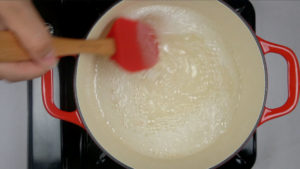
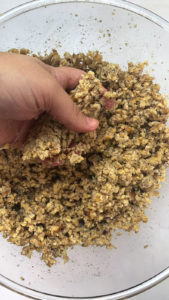
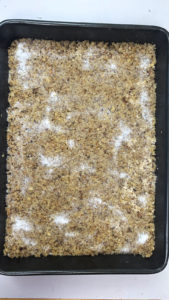
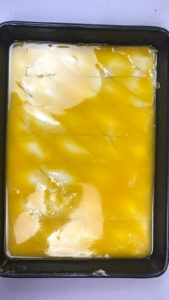
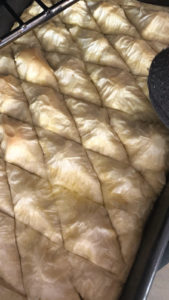
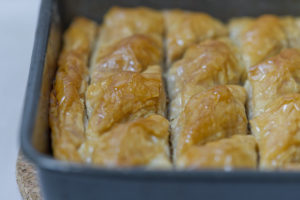


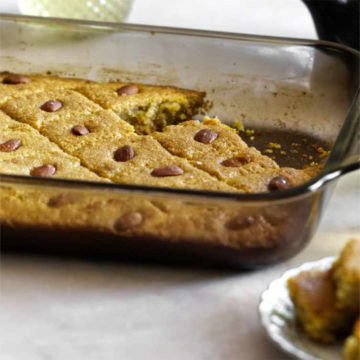
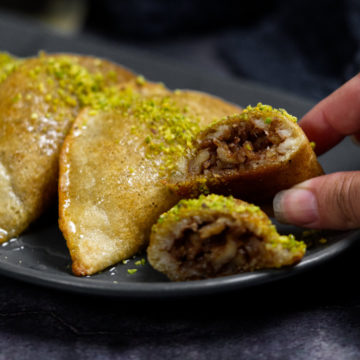
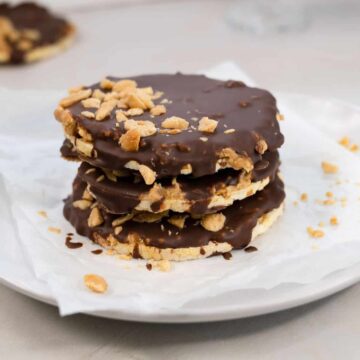
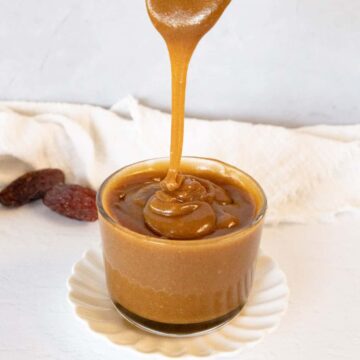
Judy
Janelle, this baklava recipe was exquisite. I used regular ghee (I'm not dairy-free) and just substituted it in equal parts. Do you think I could make this with pistachios instead of walnuts? Or maybe a combo?
Janelle Hama
Hey Judy, thank you, I am thrilled you love it as much as my family does. Yes and yes! It would be delish!